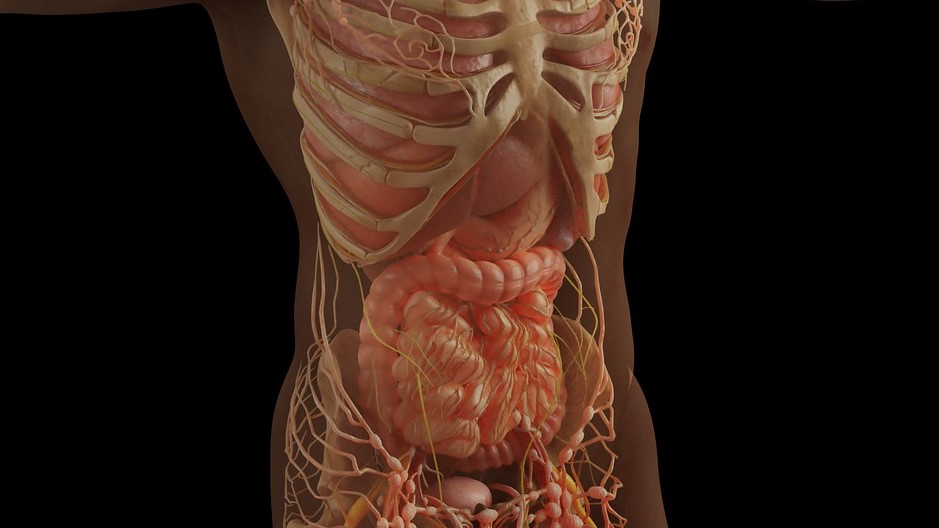Intestinal Nutrient Sensors Create ‘Gut Instincts’ for Digestion

Rare hormone producing cells in the gut secrete hormones in response to incoming food and play key roles in managing digestion and appetite. Researchers have now developed new tools to identify potential ‘nutrient sensors’ on these hormone producing cells and study their function. This could result in new strategies to interfere with the release of these hormones and provide avenues for the treatment of a variety of metabolic or gut motility disorders.
The work, led by led by the Hubrecht Institute and Roche’s Institute of Human Biology, is reported in Science.
The intestine acts as a vital barrier. It protects the body from harmful bacteria and highly dynamic pH levels, while allowing nutrients and vitamins to enter the bloodstream. The gut is also home to endocrine cells, which secrete many hormones that regulate bodily functions. These enteroendocrine cells (endocrine cells of the gut) are very rare cells that release hormones in response to various triggers, such as stretching of the stomach, energy levels and nutrients from food. These hormones in turn regulate key aspects of physiology in response to the incoming food, such as digestion and appetite. Thus, enteroendocrine cells are the body’s first responders to incoming food, and instruct and prepare the rest of the body for what is coming.
Understanding hormone release
Medications that mimic gut hormones, most famously GLP-1, are promising for the treatment of multiple metabolic diseases. The ability to directly manipulate endocrine cells to adjust hormone secretion could open up new therapeutic options. However, it has been challenging to understand how gut hormone release can be influenced effectively. Researchers have had trouble identifying the sensors on cells.
Enteroendocrine cells represent less than 1% of cells in the intestinal epithelium. In addition, the sensors on these cells are expressed in low amounts. Current studies mainly rely on mouse models, but the signals to which mouse cells respond are likely different from those to which human cells respond. Therefore, new models and approaches were required to study these signals.
Enteroendocrine cells in organoids
The Hubrecht team has previously developed methods to derive large quantities of enteroendocrine cells in human organoids. Organoids contain the same cell types of the organ they are derived from. Therefore, they are useful to explore the development and function of cells. Using a special protein, Neurogenin-3, the researchers could generate high numbers of endocrine cells in organoids of the intestine.
Enteroendocrine cells have different sensors and hormone profiles in different regions of the gut. In order to study these rare cells, the researchers needed to make organoids of all these different regions.
Stomach organoids
In the current study, the team managed to enrich enteroendocrine cells in organoids of other parts of the digestive system, including the stomach. Like the real stomach, stomach organoids respond to known inducers of hormone release and secrete large amounts of the hormone Ghrelin. Ghrelin is also called the ‘hunger hormone’ because it plays a key role in signaling hunger to the brain. The Ghrelin production of the stomach organoids confirms that these organoids can be used to study hormone secretion in enteroendocrine cells.
Enteroendocrine cell sensors
Since enteroendocrine cells are rare, researchers have struggled to profile many of these cells. In the current study, the team identified a so-called surface marker, called CD200, on human cells. The researchers used this surface marker to isolate a large number of human enteroendocrine cells from organoids and study their sensors. This revealed numerous receptor proteins that had not yet been identified in enteroendocrine cells.
The team stimulated the organoids with molecules that would activate these receptors and identified multiple new sensory receptors that control hormone release. When the researchers inactivated these receptors using CRISPR-based gene editing, hormone secretion was often blocked.
Therapeutic applications
With these data, the researchers can now predict how human enteroendocrine cells respond when certain sensory receptors are activated. Their findings thus pave the way for additional studies to explore the effects of these receptor activations. The enteroendocrine cell-enriched organoids will allow the team to perform larger, unbiased studies to identify new regulators of hormone secretion. These studies may eventually lead to therapies for metabolic diseases and gut motility disorders.
Source: Hubrecht Institute





